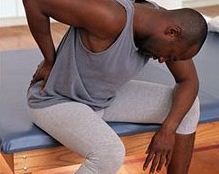 Even seasoned veterans who have invested time and effort into training and nutrition can be sidelined by injuries. In some extreme cases, the careers of some athletes have been cut short because of an injury. Athletes and even weekend warriors should be aware that injuries can happen on the game field or even while training for a match.
Even seasoned veterans who have invested time and effort into training and nutrition can be sidelined by injuries. In some extreme cases, the careers of some athletes have been cut short because of an injury. Athletes and even weekend warriors should be aware that injuries can happen on the game field or even while training for a match.
There are several reasons why an athlete can get hurt. The most common among these are poor training, inadequate warm-ups, poor conditioning and repetitive movements. In some cases, an injury can come as a result of fatigue and dehydration. Athletes and their trainers should also pay attention to the biomechanics of the players when performing a particular motion, allowing them to properly distribute force.
Among the most common injuries are sprains and strains, knee injuries, shin splints, dislocation, fractures and swollen muscles.
A visit to a qualified practitioner of physical therapy, NYC athletes ought to know, can also help prevent an injury from worsening; the specialist can apply the necessary techniques to facilitate quick recovery and rehabilitation. Physical therapists can aid injured athletes in regaining strength and movement in their injured body parts and help them manage pain and prevent further damage by building muscle strength, reducing pain in the soft tissues and improving both flexibility and range of motion.
Athletes should be aware that rehabilitation takes time and follows three consecutive phases: the acute, sub-acute and chronic phases.
At each phase, the physical therapist will use various treatment approaches. As such, it is imperative for an injured athlete to regularly visit his therapist in order to better gauge which rehabilitation phase the athlete is at. Through his extensive knowledge and experience, a physical therapist can accurately determine which types of activities and treatments an injured athlete can receive at each phase of recovery.
During the acute phase, the athlete is advised to follow R-I-C-E: Rest, Ice, Compress and Elevate the injured body part to facilitate healing and keep inflammation at bay. At the sub-acute or control motion phase, the athlete may perform exercises which increase his range of motion and strengthen the affected muscles. Finally, the chronic phase is the point where the athlete/patient is slowly eased back to his pre-injury training routines.
In order to keep injuries at bay, the athlete should resist the temptation to forgo or perform inadequate warm-ups and stretching. Should he succumb to an injury, it is best to immediately consult a physical therapist to prevent the condition from worsening.














